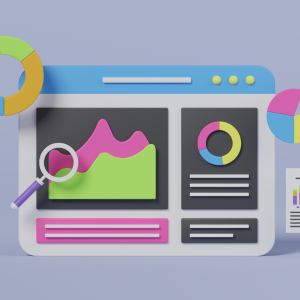Problem Statement
The leading Corporation, despite being a global enterprise, faces challenges with disparate data sources scattered across various departments, each with its unique format and structure. This decentralized data landscape hampers efficiency, scalability, and the organization’s ability to make informed, timely decisions. Furthermore, with data residing in a centralized Blob Storage without standardized schemas, there’s an urgent need to streamline data processing and reporting workflows. The absence of a unified approach results in redundancy, delays in reporting, increased costs, and potential risks related to data security and compliance. Thus, there is a critical imperative to modernize the data processing and reporting infrastructure to create a cohesive, scalable, and secure data ecosystem that supports the corporation’s strategic objectives.
Solution Overview
To address the challenges posed by diverse data sources and inefficient workflows, the leading corporation embarked on a comprehensive modernization journey focused on centralizing and streamlining its data processing and reporting mechanisms. The cornerstone of this solution lies in leveraging advanced Azure services combined with industry-leading tools for data transformation and visualization. Here’s a succinct overview:
- Centralized Data Repository: Raw data from various sources is ingested into Blob Storage, serving as a centralized Data Lake, ensuring data accessibility and consistency.
- Orchestration and Automation: Azure Data Factory (ADF) plays a pivotal role in orchestrating the entire data workflow. It automates data ingestion, transformation, and reporting processes by scheduling pipelines to trigger at regular intervals, ensuring timely and consistent data processing.
- Efficient Data Transformation: Databricks, powered by PySpark, is employed for data transformation and cleanup operations. Through Databricks notebooks, Spark jobs efficiently handle the transformation tasks, ensuring data adheres to a unified schema before being stored back in Blob Storage or other optimized storage solutions.
- Unified Reporting and Visualization: PowerBI emerges as the central reporting tool, offering robust visualization capabilities. ADF pipelines are intricately configured to refresh Power BI datasets post-successful data transformation, facilitating real-time insights and comprehensive reporting.
- Monitoring, Security, and Compliance: The solution embeds monitoring and logging features inherent in ADF and Databricks, ensuring transparency and performance tracking. Moreover, stringent security measures are implemented across Azure services to safeguard data integrity and comply with regulatory requirements.
- Scalability and Flexibility: With a modular design approach, the solution ensures adaptability. It caters to the corporation’s evolving needs, allowing seamless integration of additional data sources, transformations, and potential enhancements like advanced analytics and real-time processing.
In essence, the modernized solution provides the leading corporation with a scalable, efficient, and secure data processing and reporting framework. By harnessing the capabilities of Azure services, Databricks, and Power BI, the corporation is well-equipped to derive actionable insights, optimize costs, and drive data-driven decision-making across its global operations.
Tech Stack leveraged
Data Storage & Management:
- Blob Storage: Centralized Data Lake for raw data storage, ensuring accessibility and scalability.
Data Transformation & Processing:
- Databricks with PySpark: Utilized for data transformation, cleanup operations, and Spark job executions, ensuring scalability and efficiency.
Orchestration & Automation:
- Azure Data Factory (ADF): Central orchestration tool employed to automate data workflows, including ingestion, transformation, and reporting pipelines.
Reporting & Visualization:
- Power BI: Chosen for its robust visualization capabilities, serving as the central reporting tool for creating insightful reports and dashboards.
Monitoring & Logging:
- Azure Data Factory (ADF) Monitoring: Embedded monitoring capabilities to track pipeline executions and performance.
- Databricks Monitoring: Monitoring features to oversee Spark job execution, resource utilization, and performance metrics.
Security & Compliance:
- Azure Security Measures: Leveraged to ensure data integrity, enforce access controls, and comply with regulatory requirements throughout the workflow.
Integration & Flexibility:
- The architecture is designed with a modular approach, allowing for seamless integration with other Azure services or potential third-party tools as per specific business requirements.
Benefits delivered
Enhanced Efficiency & Scalability:
- Centralized data processing eliminates redundancy, streamlining operations.
- Leveraging Databricks ensures scalability, allowing the corporation to handle large volumes of data seamlessly.
Timely & Consistent Reporting:
- Automated pipelines through Azure Data Factory guarantee timely data ingestion, transformation, and reporting.
- Power BI’s automatic dataset refresh functionality ensures that reports reflect the most recent data, promoting up-to-date decision-making.
Unified & Comprehensive Reporting:
- Power BI serves as a centralized platform for insightful reports and dashboards, providing stakeholders with a unified view of organizational data.
Cost Optimization:
- Utilizing serverless options within Databricks helps optimize costs by aligning expenses with actual resource consumption, avoiding unnecessary expenditures.
Flexibility & Adaptability:
- The modular design facilitates easy integration of additional data sources, transformations, and potential future enhancements, ensuring the solution remains aligned with evolving business needs.
Advanced Analytical Capabilities:
- The groundwork laid by the modernized infrastructure paves the way for exploring advanced analytics, predictive modeling, and machine learning capabilities in Databricks, enabling the corporation to derive deeper insights and forecast trends.
Security & Compliance Assurance:
- Implementing stringent security measures across Azure services ensures data integrity, confidentiality, and compliance with regulatory standards, safeguarding the corporation’s reputation and stakeholder trust.
In essence, the modernization initiative delivers a holistic set of benefits, empowering the leading Corporation with enhanced operational efficiency, actionable insights, cost savings, and a competitive edge in today’s data-driven landscape.

